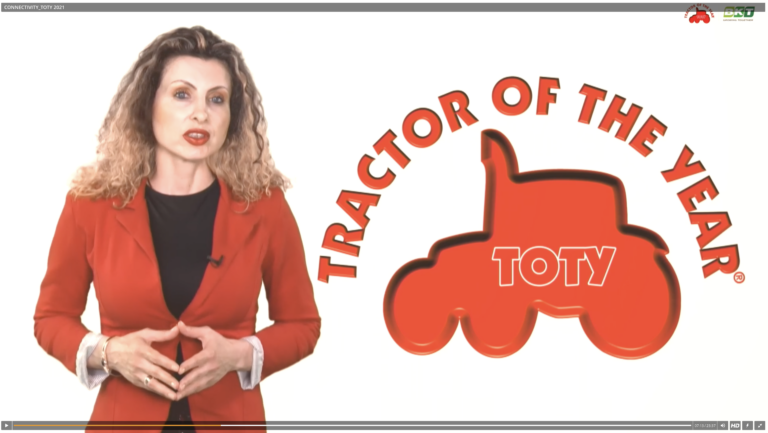In a new video Tractor of the Year (TOTY) has addressed one of the most topical issues for its impact both globally and on agriculture, namely digital connectivity.
A general overview and update was provided by Luca Zorloni, the economy and internet editor at wired.it, who showed how Connectivity is one of the most essential topics not only in everyday life but also to be able to develop a more realistic framework for Agriculture 4.0, or precision agriculture.
Connectivity means the possibility of transferring vast quantities of data, at high speed and in a uniform way: making a vehicle autonomous, providing remote medical assistance or increasing a battery’s durability for example. In agriculture the future also seems to be increasingly digital.
As Zorloni notes: “In 2050 there will be 9.5 billion of us, which means proportionally increasing food production to meet this demand. This is why it is essential to move towards smart Agriculture. To achieve this goal, investments are envisaged of around 23.44 billion dollars by 2025, including the realisation of drones, robots, and new storage and cultivation technologies. According to a study by Ernst & Young, in 1960 on average 1 farmer could feed 26 people, in 2015, the same farmer could feed 155 people. But applying the same measurement parameters, in 2025 each farmer will be responsible for 265 people. That is why connectivity and digitalisation will be essential instruments for the survival of agriculture and satisfying the demand for food.”
Also in the studio was Yuri D’Antilio, field engineer at BKT Europe, who underlined how research into transforming machinery and related equipment will make the difference in both the medium and long term.
“A parameter which we will no longer be able to overlook in the digital revolution in agriculture will be sustainability, both in terms of a focus on the environment and in term of waste and cost-reduction,” he said. “The last decade has seen a radical transformation in Agriculture, with the increase in demand for food and in urbanisation. Our responsibility as producers is to address the change by offering the best and most sustainable solutions possible.”





